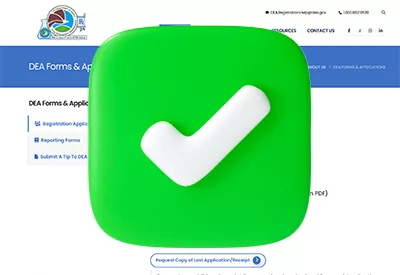Making the Case: How to Reduce Insurance Denials in Psychiatric Care

Victoria Hendrick, MD. Chief, Inpatient Psychiatry, Olive View-UCLA Medical Center, Los Angeles, CA; Editor-in-Chief, The Carlat Hospital Psychiatry Report.
Dr. Hendrick has no financial relationships with companies related to this material.
If you work in a hospital, you’re likely familiar with how insurance denials and unclear policies can disrupt patient care. Navigating the complexities of insurance is time-consuming, often pulling us from our clinical duties to handle administrative tasks. In the following sections, I’ll break down key aspects of insurance coverage and offer some practical tips to help make sure your patients receive the care they need.
Quick Tips to Tackle Insurance Hurdles
|
Medical necessity criteria
One of the most common reasons for insurance denials is a failure to meet medical necessity criteria. Insurance companies used to rely on proprietary guidelines that lacked transparency and consistency, but in recent years there’s been a shift toward more standardized, evidence-based criteria. These are typically developed by government agencies (eg, Centers for Medicare & Medicaid Services), private organizations (eg, InterQual, Milliman Care Guidelines), and clinical specialty societies (eg, the American Society of Addiction Medicine). These guidelines have helped standardize coverage decisions across insurers, making the approval process more predictable and transparent (Graham R et al, eds. Clinical Practice Guidelines We Can Trust. Washington, DC: National Academies Press; 2011).
For inpatient psychiatric care, the main criterion is demonstrating that the patient poses a danger to themselves or others or is unable to take care of basic needs due to mental illness. A common documentation pitfall is emphasizing the patient’s progress without explaining why they still require hospitalization. It’s understandable to highlight improvement, but if the chart doesn’t clearly explain ongoing safety risks, insurers may view the patient as stable enough for discharge.
Also explain why a lower level of care is not currently safe or appropriate. Co-occurring conditions, such as substance use, personality disorders, or medical illnesses like diabetes, may impair judgment, reduce treatment adherence, or create medical risks that make discharge unsafe, especially if the patient lacks reliable support or stable housing. Symptoms like disorganized thinking or poor judgment must be clearly linked to current risk. Include specific examples—for instance, note if a patient misuses sharp objects due to confusion, refuses fall precautions, attempts to eat non-food items, displays inappropriate sexual behavior, or neglects hygiene and medications. The impact of better documentation is clear: A quality improvement project at Stanford Health Care reduced psychiatric inpatient denials by 69% over two years through improved documentation of medical necessity (Baum G et al, Prof Case Manag 2022;27(6):288–294).
Consistency in documentation
Inconsistencies between provider notes are another common reason for denials. For example, if your note says, “The patient is calm and cooperative,” but a nursing note states, “The patient is agitated and requires frequent redirection,” it can raise red flags for insurers. While insurers understand that patients’ conditions can fluctuate throughout the day, they expect a cohesive, unified account of the patient’s status. To minimize the risk of denials, make sure to communicate regularly with the interdisciplinary team, ideally through routine team meetings, to ensure everyone is aligned on the patient’s condition and treatment plan.
The importance of proactive discharge planning
Insurers begin reviewing discharge planning early in the admission. They want to see a clear plan for next steps: where the patient will go, what support they’ll have, and what services are arranged. This is particularly important for older adults, for whom placement in skilled nursing or long-term care can be delayed. Document the discharge plan early and update it regularly, including housing, transportation, follow-up care, and involvement of family or outside agencies. A well-articulated plan helps reassure insurers that the patient’s care is being managed appropriately.
Prior authorizations and insurance verification
While clinicians may not handle the logistics of prior authorizations or insurance verification, these issues often affect patient care—especially during off-hours or in crisis situations. Many insurers require prior authorization for psychiatric admissions, but these approvals aren’t always feasible at night or on weekends. In such cases, care may proceed under a retrospective review, which requires strong documentation to justify the admission after the fact. You can support the process by:
Documenting clear clinical justification for admission from the outset—especially if the patient arrives after hours or without insurance details.
Noting urgency and safety concerns in your initial assessment, including statements such as “Admission required due to imminent risk of harm and no safe discharge alternative.”
Communicating with case management or utilization review staff early, especially if the patient’s insurance status is unclear or if prior authorization was delayed.
If a patient presents without insurance information (eg, no ID or wallet), the risk of delayed or denied coverage increases. While you may not control verification systems, being aware of these gaps allows you to:
- Reinforce the need for continued care in your documentation, in case retrospective authorization is pursued.
- Avoid assumptions about length of stay, as delays in verification can affect discharge timelines and insurance coverage windows.
In short, while you may not process authorizations yourself, your clinical notes are often the key evidence reviewers rely on. Strong, early documentation helps make the case for medical necessity and supports your hospital’s ability to secure coverage.
Understanding payment models
Most clinicians aren’t directly involved in billing, and you likely won’t know which payment model applies to a specific patient. That’s because reimbursement is based on contracts between the hospital and each insurer, rather than being chosen per patient. Still, knowing the basics can help you document in a way that supports appropriate payment and reduces the risk of denials.
- Per diem: The hospital receives a fixed daily rate for each inpatient day. Specialized services—like ECT, one-on-one staffing, or imaging—may need separate documentation to be reimbursed. For Medicare patients in psychiatric facilities, the per diem rate is adjusted under the Inpatient Psychiatric Facility Prospective Payment System (www.tinyurl.com/mr4butfx).
- Diagnosis-Related Group (DRG): Payment is tied to diagnosis and comorbidities. DRG billing is common in Medicare Advantage and some Medicaid plans. Be sure to document all relevant psychiatric, substance use, and medical conditions.
- Case rate: A single payment covers the entire admission, regardless of length of stay. Delays in discharge or step-down care (eg, to a partial hospitalization program or rehab) may lead to financial losses for the hospital.
- Percent of charges: The hospital is reimbursed based on the total documented services. This model is less common but requires careful charting of all billable care—labs, imaging, therapy, and medication management.
Even if you don’t know the exact model for a patient, your documentation can support coverage across all of them by capturing all active diagnoses, describing services provided, and explaining safety risks or delays in discharge. When in doubt, your utilization review or billing team can offer guidance on which documentation elements are most critical in your setting.
Appealing insurance denials
If you encounter an insurance denial, don’t overlook the peer-to-peer review process, even though it can be time-consuming and challenging to schedule. These reviews give you a chance to discuss the case with a physician reviewer employed by the insurer. While success rates for peer-to-peer reviews vary widely, they can be highly effective if you provide clear, objective evidence for why the patient requires ongoing care and back it up with thorough documentation (www.tinyurl.com/5n6hmrez).
Beyond securing coverage, documenting your attempt to appeal a denial may also help protect you legally. If a patient is discharged prematurely and experiences harm, you could face scrutiny, especially if there’s no record that you attempted to challenge the denial. A good-faith effort to appeal demonstrates due diligence and clinical concern.
Carlat Verdict: By clearly documenting medical necessity, keeping your documentation consistent across disciplines, and planning discharges early, you can reduce the chances of insurance denials. Also, knowing how your hospital gets reimbursed—whether it’s through per diem, DRG, case rate, or percent of charges—can help you tailor your documentation so that the care you provide is properly covered, avoiding coverage hassles down the line.

Newsletters
Please see our Terms and Conditions, Privacy Policy, Subscription Agreement, Use of Cookies, and Hardware/Software Requirements to view our website.
© 2025 Carlat Publishing, LLC and Affiliates, All Rights Reserved.


_-The-Breakthrough-Antipsychotic-That-Could-Change-Everything.webp?t=1729528747)



